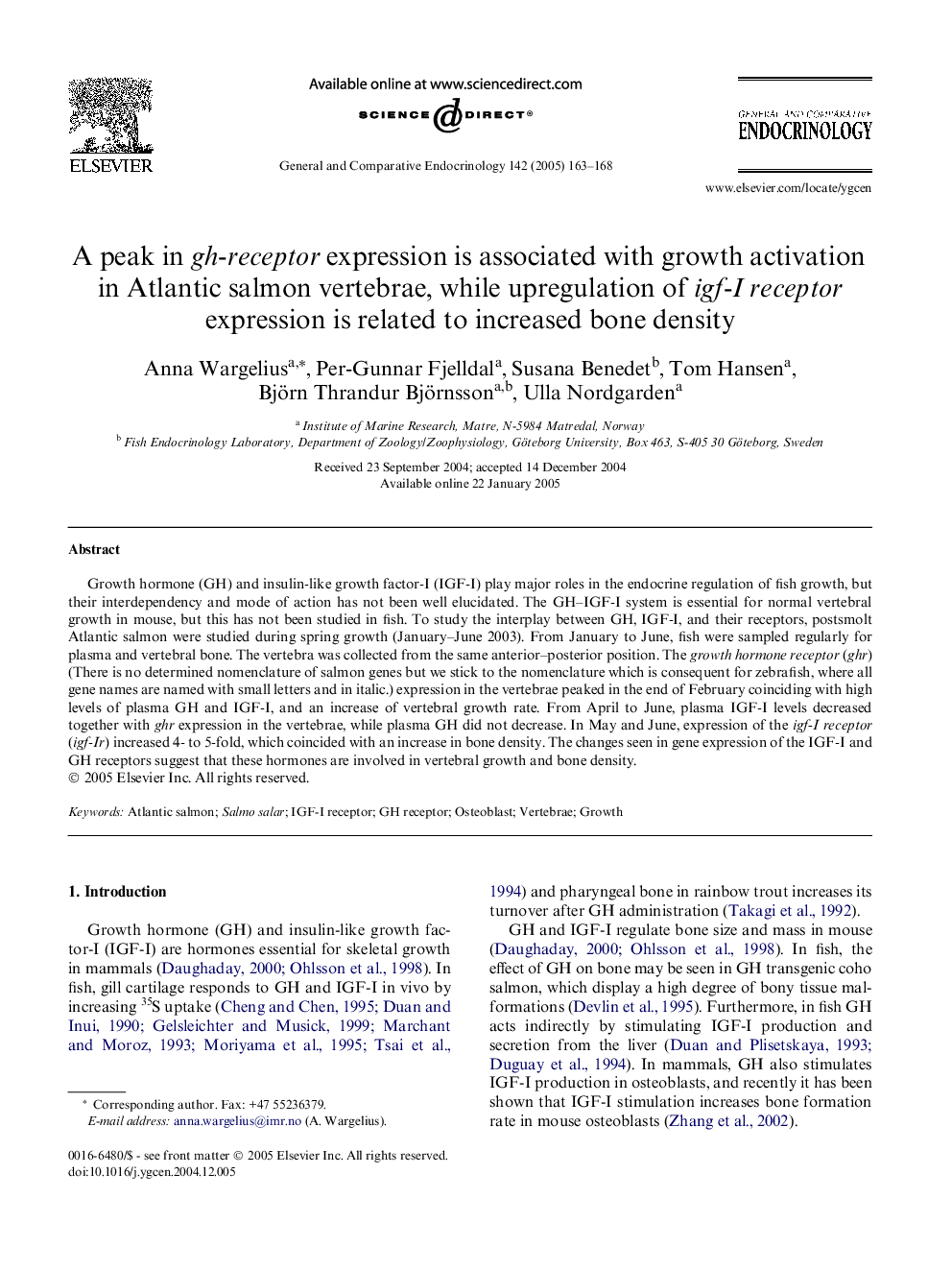| Article ID | Journal | Published Year | Pages | File Type |
|---|---|---|---|---|
| 9113203 | General and Comparative Endocrinology | 2005 | 6 Pages |
Abstract
Growth hormone (GH) and insulin-like growth factor-I (IGF-I) play major roles in the endocrine regulation of fish growth, but their interdependency and mode of action has not been well elucidated. The GH-IGF-I system is essential for normal vertebral growth in mouse, but this has not been studied in fish. To study the interplay between GH, IGF-I, and their receptors, postsmolt Atlantic salmon were studied during spring growth (January-June 2003). From January to June, fish were sampled regularly for plasma and vertebral bone. The vertebra was collected from the same anterior-posterior position. The growth hormone receptor (ghr) (There is no determined nomenclature of salmon genes but we stick to the nomenclature which is consequent for zebrafish, where all gene names are named with small letters and in italic.) expression in the vertebrae peaked in the end of February coinciding with high levels of plasma GH and IGF-I, and an increase of vertebral growth rate. From April to June, plasma IGF-I levels decreased together with ghr expression in the vertebrae, while plasma GH did not decrease. In May and June, expression of the igf-I receptor (igf-Ir) increased 4- to 5-fold, which coincided with an increase in bone density. The changes seen in gene expression of the IGF-I and GH receptors suggest that these hormones are involved in vertebral growth and bone density.
Related Topics
Life Sciences
Biochemistry, Genetics and Molecular Biology
Endocrinology
Authors
Anna Wargelius, Per-Gunnar Fjelldal, Susana Benedet, Tom Hansen, Björn Thrandur Björnsson, Ulla Nordgarden,
